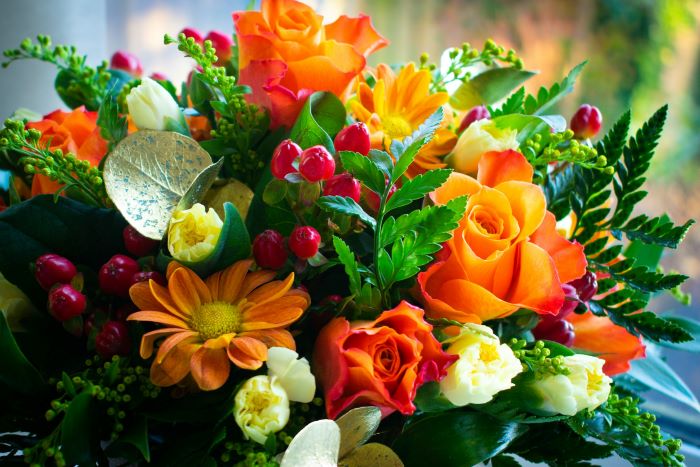Lifestyle
A Comprehensive Guide to Seasonal Flower Arrangements

Floral arrangements are an exquisite art form that allows individuals to capture the beauty of each season in a vibrant display of colors, textures, and fragrances. Creating seasonal flower arrangements is a delightful way to bring the outdoors inside and infuse your living spaces with the spirit of the time of year. In this comprehensive guide, with the help of our friends from Daily Blooms, which provides flower delivery services in Melbourne, we’ll explore the art of seasonal flower arrangements, offering tips, ideas, and inspiration to help you create stunning bouquets that reflect the unique characteristics of each season.
Understanding Seasonal Blooms
One of the keys to crafting breathtaking seasonal flower arrangements is understanding the flowers that are in bloom during specific times of the year. Spring, for instance, is known for its abundance of tulips, daffodils, and cherry blossoms, while summer brings vibrant sunflowers, dahlias, and zinnias. In fall, you can embrace the warm tones of chrysanthemums, sunflowers, and autumn leaves, while winter offers an array of evergreens, amaryllis, and holly. By selecting blooms that are in season, you not only ensure the freshness of your arrangement but also celebrate the unique beauty of that particular time of year.
Color Palette and Theme
Each season boasts its own distinct color palette, and incorporating these hues into your floral arrangements enhances the overall aesthetic. In spring, pastel shades like soft pinks, blues, and greens evoke a sense of renewal and freshness. Summer calls for bold and bright colors like yellows, oranges, and reds, mirroring the warmth of the sun. Fall arrangements can feature rich and warm tones such as deep reds, oranges, and browns, capturing the cozy ambiance of the season. Winter arrangements often focus on whites, greens, and blues, symbolizing the crispness and tranquility of the colder months. Selecting a cohesive color palette helps create a visually appealing and harmonious arrangement that reflects the essence of the season.
Texture and Foliage
To add depth and interest to your seasonal flower arrangements, consider incorporating a variety of textures and foliage. In spring, delicate blossoms like lilacs or lilies paired with soft, wispy greens create an airy and romantic feel. Summer arrangements can benefit from the addition of textured flowers like hydrangeas or daisies, complemented by lush, green foliage. Fall provides an opportunity to incorporate elements like berries, seed pods, and ornamental grasses, adding a rustic and earthy touch. Winter arrangements, on the other hand, can be enhanced with the inclusion of pine cones, evergreen branches, and eucalyptus leaves, creating a sophisticated and wintry atmosphere.
Arrangement Styles for Each Season
Different seasons call for distinct arrangement styles that capture the essence of the time of year. For spring, consider a loose and garden-inspired bouquet with a mix of tulips, daffodils, and ranunculus arranged in an asymmetrical fashion. Summer arrangements can be more vibrant and playful, featuring bold blooms arranged in a tight, round shape. Fall arrangements often embrace a more structured and compact style, showcasing the richness of autumnal colors. Winter arrangements, with their emphasis on simplicity and elegance, may feature white flowers accented with silver or gold, arranged in a classic and symmetrical design.
Tips for Prolonging the Life of Your Arrangement
Once you’ve created your seasonal flower arrangement, you’ll want to ensure its longevity. Here are some tips to help your blooms stay fresh for as long as possible:
Proper Hydration: Change the water in your vase every two days to keep it clean and ensure your flowers receive adequate hydration.
Trimming Stems: Trim the stems at an angle to allow for better water absorption. Remove any leaves that might be submerged in water to prevent bacterial growth.
Cool Environment: Keep your arrangement in a cool area away from direct sunlight and heat sources, as this helps slow down the aging process of the flowers.
Use Flower Preservatives: Consider using commercial flower preservatives or create your own by adding a teaspoon of sugar and a few drops of bleach to the water.
Conclusion
Creating seasonal flower arrangements is a delightful way to connect with nature and infuse your home with the spirit of each season. By understanding the blooms that flourish during specific times of the year, embracing the color palettes, experimenting with textures, and selecting appropriate arrangement styles, you can craft stunning bouquets that reflect the beauty and uniqueness of each season. Whether you’re celebrating the vibrancy of summer or the tranquility of winter, seasonal flower arrangements offer a creative and visually appealing way to bring the outdoors inside, transforming your space into a living canvas of nature’s wonders.

















































